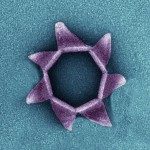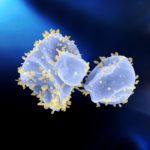Link to Pubmed [PMID] – 29133882
Nat Microbiol 2018;3(1):38-46
Metagenomic sequence analysis is rapidly becoming the primary source of virus discovery (1-3). A substantial majority of the currently available virus genomes come from metagenomics, and some of these represent extremely abundant viruses, even if never grown in the laboratory. A particularly striking case of a virus discovered via metagenomics is crAssphage, which is by far the most abundant human-associated virus known, comprising up to 90% of sequences in the gut virome (4). Over 80% of the predicted proteins encoded in the approximately 100 kilobase crAssphage genome showed no significant similarity to available protein sequences, precluding classification of this virus and hampering further study. Here we combine a comprehensive search of genomic and metagenomic databases with sensitive methods for protein sequence analysis to identify an expansive, diverse group of bacteriophages related to crAssphage and predict the functions of the majority of phage proteins, in particular those that comprise the structural, replication and expression modules. Most, if not all, of the crAss-like phages appear to be associated with diverse bacteria from the phylum Bacteroidetes, which includes some of the most abundant bacteria in the human gut microbiome and that are also common in various other habitats. These findings provide for experimental characterization of the most abundant but poorly understood members of the human-associated virome.


